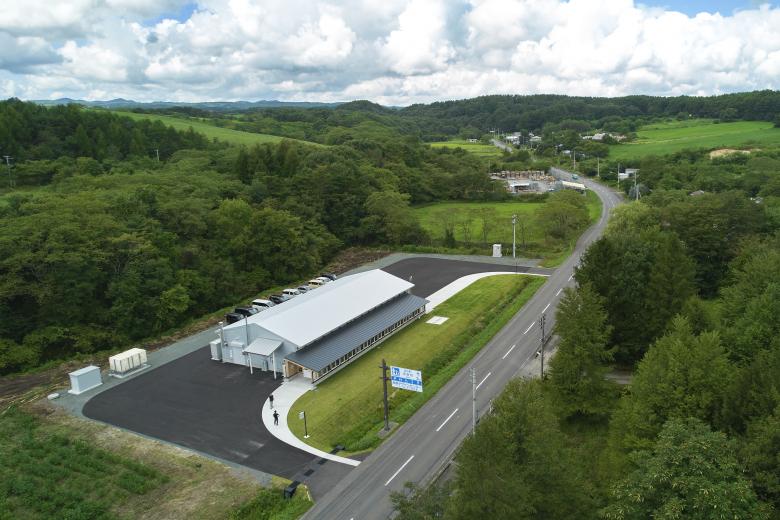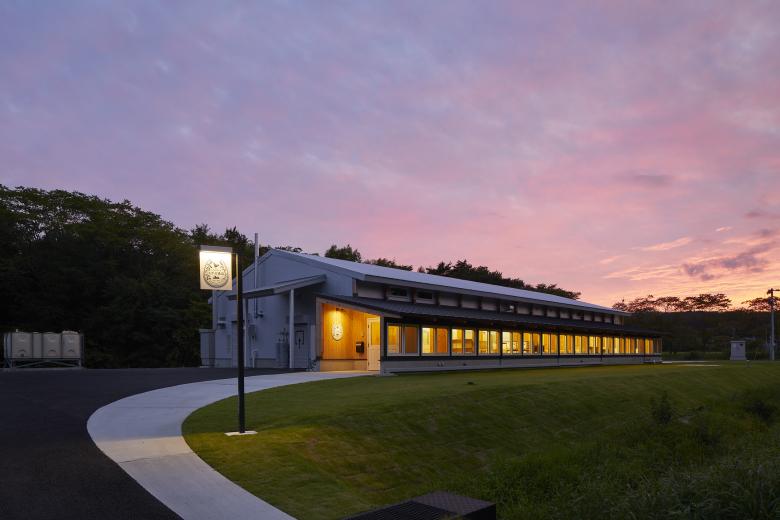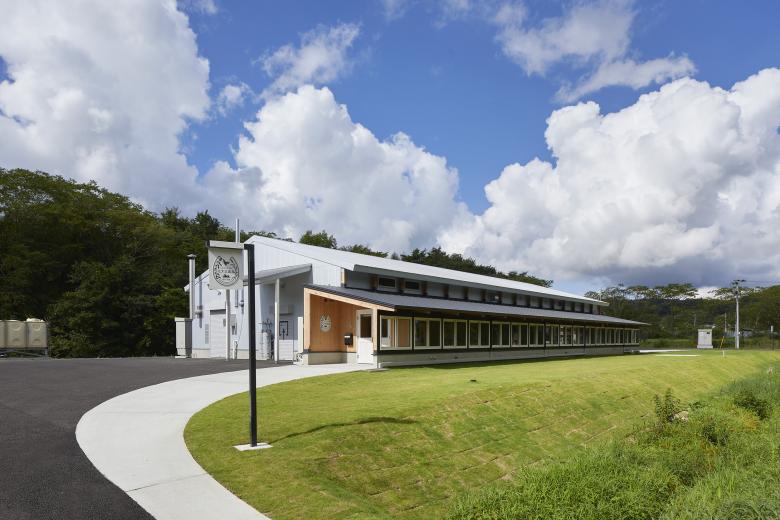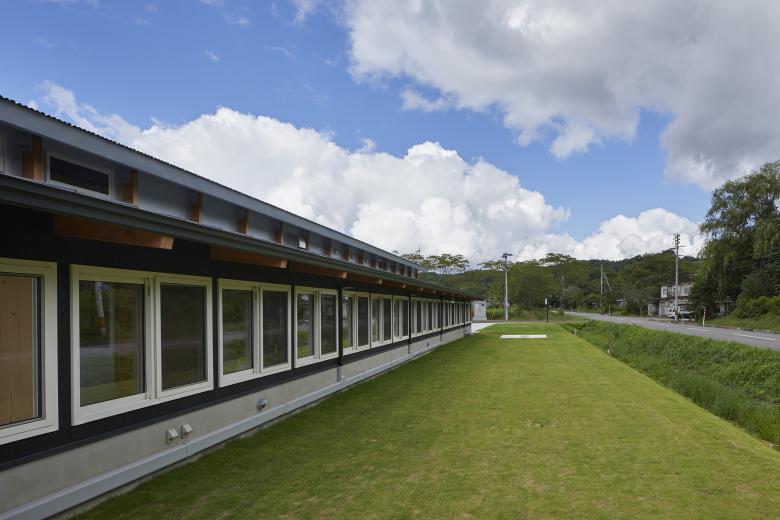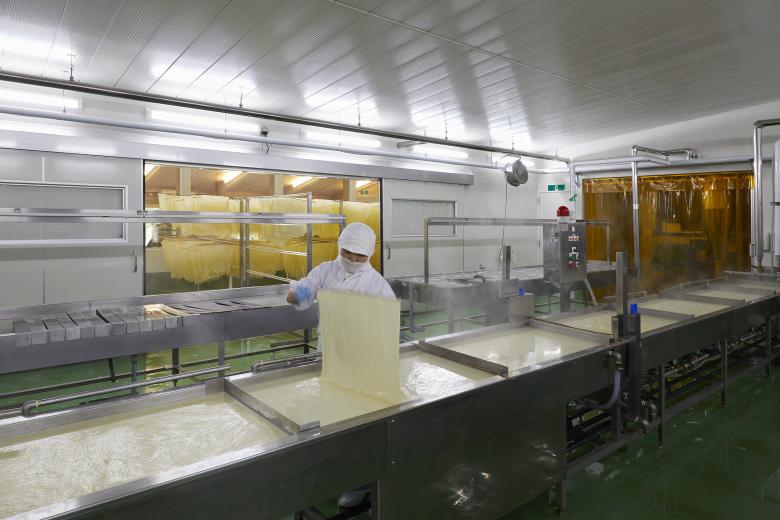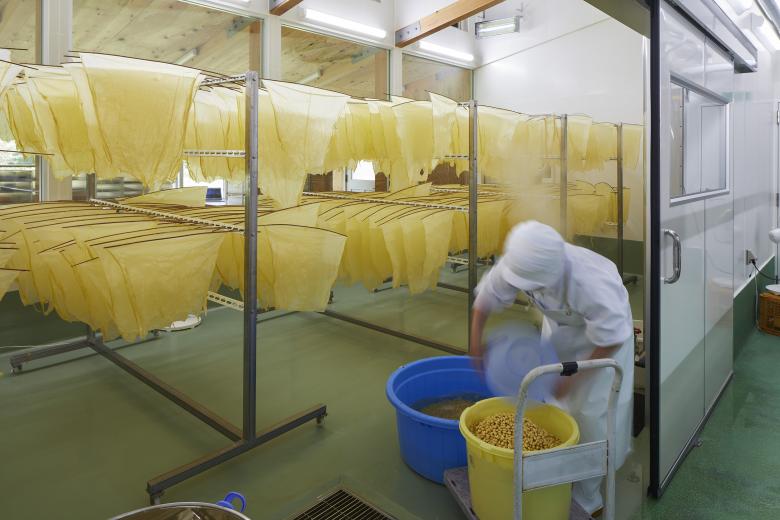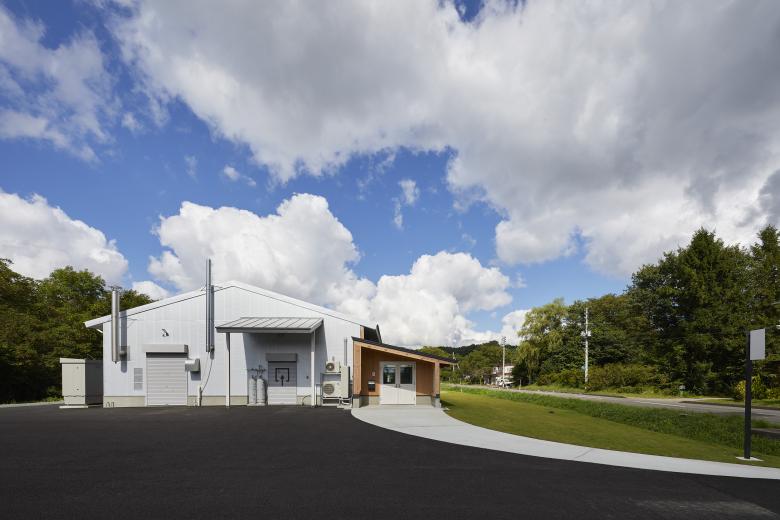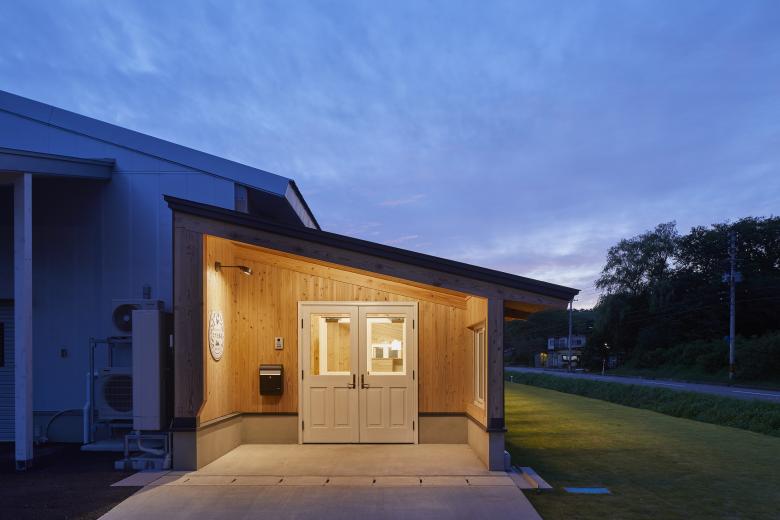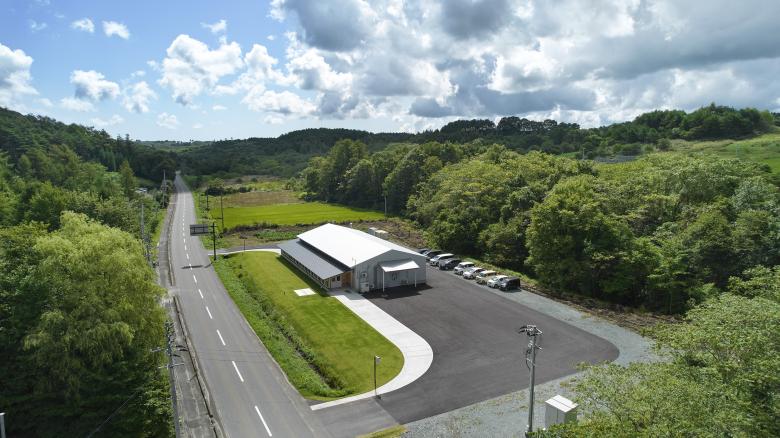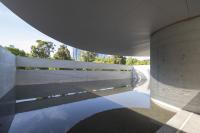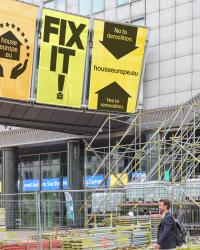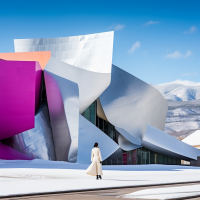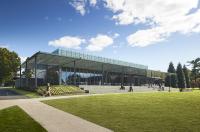New Factory of Minami Foods
Iwate, Japan
This is a new factory of Minami Foods which produces “yuba” (bean curd skin) in a marginal village which is in danger of disappearing due to depopulation and over half the residents being over the age of 65.
“Complex CHA-NO-MA (Japanese living room)” were the first words in a memo handed in our first meeting from the client who wanted to renew a factory. He was introduced by our mutual designer friend. These words left us a strong impression, as it made us wonder why “CHA-NO-MA” was used to describe a factory.
The definition of “complex CHA-NO-MA” in Minami Foods is a place where visions are nurtured through discussions on politics and future. More specifically, there would be business meetings, family gatherings, communication among boarding table tennis scholarship students, junior sport club members, elementary/ secondary school students in green tourism, college interns, and international students from China, all having multifaceted relationship over dinner and tea. The memo concluded that this complexity was the catalyst for momentum to revitalize local community, and the factory was a “place to nurture people and allow them to speak out”, “place to grow without being lonely”, “place to feel the society and world”.
It was our first time to design a factory, but we were intrigued by this memo which hinted the factory being not an ordinary one and headed to the site.
Minami Foods has been in business for forty years in Hirono Ono, the northern end of Iwate. Their business is manufacture and sale of health-oriented food using locally harvested soybeans and mulberry leaves. Its flagship product is “yuba” (bean curd skin) produced with the same method since the start of business in the existing factory. Mr. Minami, the client, was seeking a next business development while inheriting the founder/ former president’s mission to “create jobs locally and build a society where children can work hard in studies and sports.” Mr. Ito, our designer friend, had been involved in the branding of Minami Foods including package of products, and getting successful results. The project of a new factory was conceived in this context.
Driving through many mountains and villages from the nearest train station, we arrived at the client’s premises which looked more like farm houses than a factory. Along a mountain road in green trees as far as the eye could see stood a few one-story and two-story houses, plastic greenhouses, one of which was the existing factory (whose upstairs was table tennis floor). Next to the factory stood the main house of Minami family which had CHA-NO-MA where new ideas were conceived in multifaceted, complex relations as mentioned in the memo leading to new projects and developments. Trial products were made in the factory next door to study the feasibility.
We started designing a new factory based on a Minami Foods model of CHA-NO-MA + factory combination.
The premises of the new factory is at a prominent spot along a national road which is ten-minute drive down the hill from the existing factory. A long and narrow office space with wide façade has a factory space at the back in slightly sliding position. In the office space are a kitchen, sofas, and dining tables which are must-have furnishing in “CHA-NO-MA” and the space is large enough for table tennis if desired. The façade facing the national road is entirely glass window and activities in CHA-NO-MA and sheets of bean curd skin being dried in the factory can be seen through the windows. Outside the windows is a lawn yard which can be used for events.
Following the style of Minami Foods who procures ingredients from local harvest, we employed wooden truss which is used for poultry houses found throughout the village as the structure of the factory. In ordinary poultry houses, knee braces and flat pillars are placed at both ends of short side to increase quake resistance, but this factory has knee braces and flat pillars moved to the one side (office side) and integrated with the roof beams of office for quake resistance and design. The other side (at the back of the factory) is removed of knee braces and flat pillars to maximize the flat surface inside the factory space. As the factory would be required to comply with international standards for food hygiene control such as HACCP and FSSC22000, flat surface and simple space were ideal for easy cleaning to avoid stain and mold.
The national road where the premises is located crosses east and west of Hirono cho and connects highway at west end. West side of the factory is shipping end and east is receiving end so that the ingredient received from east is manufactured to be products and shipped from the other end. Within the premises, east and west end have enough space for expansion; west for future building and east for soybean field. Currently soybeans are procured from local farmer, but having an ingredient field within the premises allows more options for soybean breed and product development while further promoting “sixth sector industrialization” (primary producers’ diversification into processing and distribution) externally.
Mr. Minami says we are living in an age when further added value, differentiation, and innovation are required by companies as Japan struggles in recession, depopulation and deflation triggered by maturing economy. It is also an age when infinite information is available via Internet, instant access to anyone is available. He believes “there must be a way conceivable only in rural area”. With this belief, his company recruited staff to work on the new factory from early stage, one of whom fluent in English moved from Tokyo, sharing the passion with the company, to join sales department.
After the new factory started operation, there have been interesting reactions from the community, such as intrigued passerby seeking employment at the company or people opening the door thinking the factory was a shop. The surrounding is pitch dark at night as there is not even a convenience store nearby, light flooding from CHA-NO-MA could make people feel secure and attracted. The product is selling well and the factory has become too small for the demand. We are already planning second phase of factory construction. The product will be exhibited in New York and Taipei this summer, Mr. Minami and his staff are expected to have more opportunity to present their products in many places in the world.
Iwate has one of the largest poultry farming business in Japan and poultry houses can be built at low cost. We were able to minimize the investment amount by utilizing its structure. Mr. Minami considers re-evaluation of existing resources and technology from different perspective could be an effective method for young local business owners who are inheriting businesses, and he is already receiving requests to give lectures.
We wanted the architecture to stand as a hub of the activities of Minami Foods who seeks to enrich both its local village and the world by connecting them via network. The architecture has a simple structure to maintain connectivity, extensibility and openness which enable their activities to be spontaneously disseminated.
I am looking forward to further involvement as an architect in future business development of Minami Foods.
– Akio Nakasa –
- Architekten
- Akio Nakasa / Naf Architect & Design
- Standort
- Hirono Town, Iwate, Japan
- Jahr
- 2021
